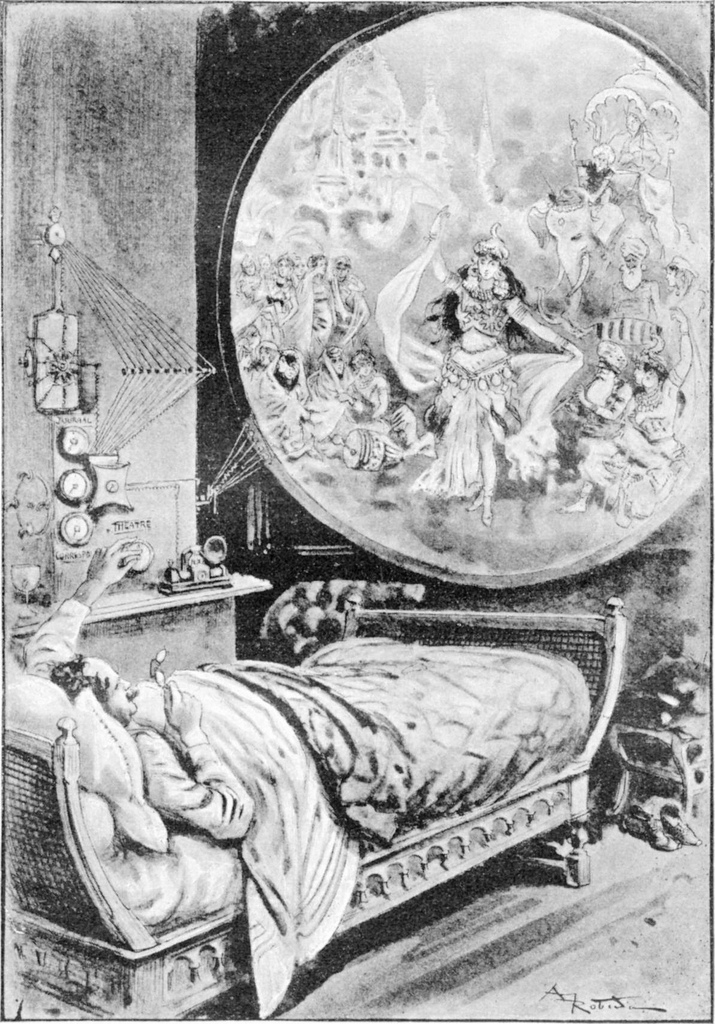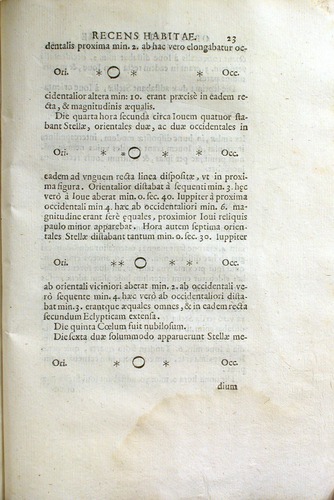|
Amalthea (moon)
Amalthea () is a moons of Jupiter, moon of Jupiter. It has the third-closest orbit around Jupiter among known moons and was the fifth moon of Jupiter to be discovered, so it is also known as . It is also the fifth-largest moon of Jupiter, after the four Galilean moons. Edward Emerson Barnard discovered the moon on 9 September 1892 and named it after Amalthea (mythology), Amalthea of Greek mythology. It was the last natural satellite to be discovered by direct visual observation; all later moons were discovered by astronomical photography, photographic or digital imaging. Amalthea is in a close orbit around Jupiter and is within the outer edge of the Rings of Jupiter#Amalthea gossamer ring, Amalthea Gossamer Ring, which is formed from dust ejected from its surface. Jupiter would appear 46.5 degrees in diameter from its surface. Amalthea is the largest of the inner satellites of Jupiter and is irregularly shaped and reddish in color. It is thought to consist of porous water ... [...More Info...] [...Related Items...] OR: [Wikipedia] [Google] [Baidu] |
113 Amalthea
113 Amalthea () is a stony Florian asteroid from the inner regions of the asteroid belt, approximately in diameter. It was discovered on 12 March 1871, by German astronomer Robert Luther at the Bilk Observatory in Düsseldorf, Germany. The elongated S-type asteroid has a rotation period of 9.95 hours. It was named after Amalthea (mythology), Amalthea from Greek mythology. A purported Minor-planet moon, satellite of Amalthea was announced in July 2017, but was later found to be a software error in July 2021. Description Amalthea is thought to be a fragment from the mantle of a 4 Vesta, Vesta-sized, 300–600 km diameter parent body that broke up around one billion years ago, with the other major remnant being 9 Metis. The spectrum of Amalthea reveals the presence of the mineral olivine, a relative rarity in the asteroid belt. Based on observations made during a stellar Asteroid occultation, occultation by Amalthea of a 10th-magnitude star on 14 March 2017, it was announ ... [...More Info...] [...Related Items...] OR: [Wikipedia] [Google] [Baidu] |
Amalthea Voyager-1
Amalthea may refer to: *Amalthea (mythology), the foster-mother of Zeus in Greek mythology *Amalthea (moon), a moon of Jupiter *113 Amalthea, a main-belt asteroid *Cumaean Sibyl or Amalthea, a priestess presiding over the Apollonian oracle at Cumae, a Greek colony near Naples, Italy *Lady Amalthea, a character in ''The Last Unicorn ''The Last Unicorn'' is a fantasy novel by American author Peter S. Beagle and published in 1968, by Viking Press in the U.S. and The Bodley Head in the U.K. It follows the tale of a unicorn, who believes she is the last of her kind in the ...'' * Amalthea Cellars, a winery in New Jersey, United States Ships *''Amalthea'' (1863), a barquentine bombed by Anton Nilson in 1908 *''Amalthea'' (1881), a steam yacht built as ''Iolanthe'', renamed ''Amalthæa'', and later renamed * (1985), a cargo ship {{ship index ... [...More Info...] [...Related Items...] OR: [Wikipedia] [Google] [Baidu] |
Jupiter Showcases Auroras, Hazes (NIRCam Widefield View - Annotated)
Jupiter is the fifth planet from the Sun and the largest in the Solar System. It is a gas giant with a mass more than 2.5 times that of all the other planets in the Solar System combined and slightly less than one-thousandth the mass of the Sun. Its diameter is 11 times that of Earth and a tenth that of the Sun. Jupiter orbits the Sun at a distance of , with an orbital period of . It is the third-brightest natural object in the Earth's night sky, after the Moon and Venus, and has been observed since prehistoric times. Its name derives from that of Jupiter, the chief deity of ancient Roman religion. Jupiter was the first of the Sun's planets to form, and its inward migration during the primordial phase of the Solar System affected much of the formation history of the other planets. Jupiter's atmosphere consists of 76% hydrogen and 24% helium by mass, with a denser interior. It contains trace elements and compounds like carbon, oxygen, sulfur, neon, ammonia, water vapour, ph ... [...More Info...] [...Related Items...] OR: [Wikipedia] [Google] [Baidu] |
International Astronomical Union
The International Astronomical Union (IAU; , UAI) is an international non-governmental organization (INGO) with the objective of advancing astronomy in all aspects, including promoting astronomical research, outreach, education, and development through global cooperation. It was founded on 28 July 1919 in Brussels, Belgium and is based in Paris, France. The IAU is composed of individual members, who include both professional astronomers and junior scientists, and national members, such as professional associations, national societies, or academic institutions. Individual members are organised into divisions, committees, and working groups centered on particular subdisciplines, subjects, or initiatives. the Union had 85 national members and 12,734 individual members, spanning 90 countries and territories. Among the key activities of the IAU is serving as a forum for scientific conferences. It sponsors nine annual symposia and holds a triannual General Assembly that sets policy ... [...More Info...] [...Related Items...] OR: [Wikipedia] [Google] [Baidu] |
Camille Flammarion
Nicolas Camille Flammarion FRAS (; 26 February 1842 – 3 June 1925) was a French astronomer and author. He was a prolific author of more than fifty titles, including popular science works about astronomy, several notable early science fiction novels, and works on psychical research and related topics. He also published the magazine '' L'Astronomie'', starting in 1882. He maintained a private observatory at Juvisy-sur-Orge, France. Biography Camille Flammarion was born in Montigny-le-Roi, Haute-Marne, France. He was the brother of Ernest Flammarion (1846–1936), the founder of the Groupe Flammarion publishing house. In 1858, he became a professional at computery at the Paris Observatory. He was a founder and the first president of the '' Société astronomique de France'', which originally had its own independent journal, ''BSAF'' (''Bulletin de la Société astronomique de France''), which was first published in 1887. In January 1895, after 13 volumes of '' L'Astrono ... [...More Info...] [...Related Items...] OR: [Wikipedia] [Google] [Baidu] |
Roman Numeral Designation
The naming of moons has been the responsibility of the International Astronomical Union's committee for Planetary System Nomenclature since 1973. That committee is known today as the Planetary nomenclature, Working Group for Planetary System Nomenclature (WGPSN). Prior to its formation, the names of natural satellite, satellites have had varying histories. The choice of names is often determined by a satellite's discoverer; however, historically some satellites were not given names for many years after their discovery; for instance, Titan (moon), Titan was discovered by Christiaan Huygens, Huygens in 1655, but was not named until 1847, almost two centuries later. Before the IAU assumed responsibility for astronomical nomenclature, only twenty-five satellites had been given names that were in wide use and are still used: 1 of Earth, 2 of Mars, 5 of Jupiter, 10 of Saturn, 5 of Uranus, and 2 of Neptune. Since then, names have been given to 137 additional planetary and dwarf planetary ... [...More Info...] [...Related Items...] OR: [Wikipedia] [Google] [Baidu] |
Goat Milk
Goat milk is the milk of domestic goats. Goats produce about 2% of the world's total annual milk supply. Some goats are bred specifically for milk. Goat milk naturally has small, well-emulsified fat globules, which means the cream will stay in suspension for a longer period of time than cow's milk; therefore, it does not need to be homogenized. Eventually, the cream will rise to the top over a period of a few days. If the milk is to be used to make cheese, homogenization is not recommended, as this changes the structure of the milk, affecting the culture's ability to coagulate the milk as well as the final quality and yield of cheese. Dairy goats in their prime (generally around the third or fourth lactation cycle) average——(or )—of milk production daily—roughly during a ten-month lactation. Goats produce more after freshening and gradually drop production toward the end of their lactation. The milk generally averages 3.5% butterfat. Сheese Goat milk is commonly ... [...More Info...] [...Related Items...] OR: [Wikipedia] [Google] [Baidu] |
Zeus
Zeus (, ) is the chief deity of the List of Greek deities, Greek pantheon. He is a sky father, sky and thunder god in ancient Greek religion and Greek mythology, mythology, who rules as king of the gods on Mount Olympus. Zeus is the child of Cronus and Rhea (mythology), Rhea, the youngest of his siblings to be born, though sometimes reckoned the eldest as the others required disgorging from Cronus's stomach. In most traditions, he is married to Hera, by whom he is usually said to have fathered Ares, Eileithyia, Hebe (mythology), Hebe, and Hephaestus.Hard 2004p. 79 At the oracle of Dodona, his consort was said to be Dione (Titaness/Oceanid), Dione, by whom the ''Iliad'' states that he fathered Aphrodite. According to the ''Theogony'', Zeus's first wife was Metis (mythology), Metis, by whom he had Athena.Hesiod, ''Theogony'886900 Zeus was also infamous for his erotic escapades. These resulted in many divine and heroic offspring, including Apollo, Artemis, Hermes, Persephone, D ... [...More Info...] [...Related Items...] OR: [Wikipedia] [Google] [Baidu] |
Greek Mythology
Greek mythology is the body of myths originally told by the Ancient Greece, ancient Greeks, and a genre of ancient Greek folklore, today absorbed alongside Roman mythology into the broader designation of classical mythology. These stories concern the ancient Greek religion's view of the Cosmogony, origin and Cosmology#Metaphysical cosmology, nature of the world; the lives and activities of List of Greek deities, deities, Greek hero cult, heroes, and List of Greek mythological creatures, mythological creatures; and the origins and significance of the ancient Greeks' cult (religious practice), cult and ritual practices. Modern scholars study the myths to shed light on the religious and political institutions of ancient Greece, and to better understand the nature of mythmaking itself. The Greek myths were initially propagated in an oral tradition, oral-poetic tradition most likely by Minoan civilization, Minoan and Mycenaean Greece, Mycenaean singers starting in the 18th century&n ... [...More Info...] [...Related Items...] OR: [Wikipedia] [Google] [Baidu] |
Nymph
A nymph (; ; sometimes spelled nymphe) is a minor female nature deity in ancient Greek folklore. Distinct from other Greek goddesses, nymphs are generally regarded as personifications of nature; they are typically tied to a specific place, landform, or tree, and are usually depicted as Virginity, maidens. Because of their association with springs, they were often seen as having healing properties; other divine powers of the nymphs included divination and shapeshifting. In spite of their divine nature, they were not immortality, immortal. Nymphs are divided into various Nymph#List, broad subgroups based on their habitat, such as the Meliae (ash tree nymphs), the Dryads (oak tree nymphs), the Alseids (Grove (nature), grove nymphs), the Naiads (Spring (hydrology), spring nymphs), the Nereids (sea nymphs), the Oceanids (ocean nymphs), and the Oreads (mountain nymphs). Other nymphs included the Hesperides (evening nymphs), the Hyades (mythology), Hyades (rain nymphs), and the Pleiade ... [...More Info...] [...Related Items...] OR: [Wikipedia] [Google] [Baidu] |
Galilean Satellites
The Galilean moons (), or Galilean satellites, are the four largest moons of Jupiter. They are, in descending-size order, Ganymede, Callisto, Io, and Europa. They are the most readily visible Solar System objects after Saturn, the dimmest of the classical planets; though their closeness to bright Jupiter makes naked-eye observation very difficult, they are readily seen with common binoculars, even under night sky conditions of high light pollution. The invention of the telescope allowed astronomers to discover the moons in 1610. Through this, they became the first Solar System objects discovered since humans have started tracking the classical planets, and the first objects to be found to orbit any planet beyond Earth. They are planetary-mass moons and among the largest objects in the Solar System. All four, along with Titan, Triton, and Earth's Moon, are larger than any of the Solar System's dwarf planets. The largest, Ganymede, is the largest moon in the Solar System a ... [...More Info...] [...Related Items...] OR: [Wikipedia] [Google] [Baidu] |








